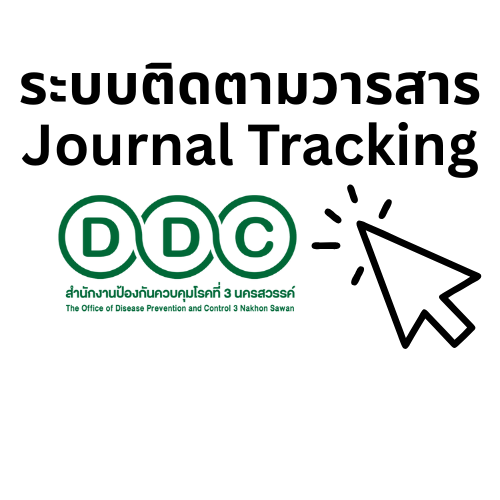The Risk Assessment for Health of Informal Workers :The sewing and the product of fabric Uthai Thani Province
Keywords:
informal workers, Risk analysis and assessment, sewing, weaving and textile productsAbstract
This research was analytical survey research to analyze and assess the health risks of informal workers, case study of sewing and the product of fabric in Uthai Thani province and study the support requirements for reducing the risks, this study has 220 samples. Data were collected by health risk assessment form of informal workers, Department of Disease Control analyze data with percentage, Chi-square test and Fisher’s exact test. The results showed that the most informal workers were the female 99.09 percent , 46.36 percent in the age group 50-59 years , 71.28 percent of workers was found to cause injuries or illnesses, 50.91 percent of workers was aware of their own injuries and co-worker, 49.55 percent the work conditions are organized to prevent harm, 60 percent do not drink alcohol, 96.36 percent do not smoking, and 39.55 percent had underlying disease, the most underlying disease was hypertension and diabetes. 80 percent of most informal workers had experience a minor accident without stopping the work and 89.55 percent no use personal protective equipment while working. When evaluating the level of risk, most of the risk was at a medium level of 64.55%. In addition, found working conditions such as work in a posture that causes pain, dust exposure and problems with eyesight, as a result, informal workers have a significant effect of a statistical illness. Informal workers need support such as health check-up, knowledge and personal protective equipment 98.18 percent. Researchers have developed action plans to provide concrete support and risk management.
References
2. สำนักงานสถิติแห่งชาติ. (2550). รายงานการสำรวจการ รับงานมาทำที่บ้านฉบับสมบูรณ์. เข้าถึงเมื่อ 25 พฤศจิกายน 2560, จาก http://service.nso.go.th /nso/nsopublish/service/survey/HomeRep 50.pdf.
3. สำนักงานสถิติแห่งชาติ. (2555). ความหมายการรับงานไปทำที่บ้าน. เข้าถึงเมื่อ 25 พฤศจิกายน 2560, จาก
http://statstd.nso.go.th/definition/projectdetail .aspx?periodId=66&defprodefId=816.
4. สำนักงานสถิติแห่งชาติ. (2550). บทสรุปผู้บริหาร-การรับงานมาทำที่บ้าน. เข้าถึงเมื่อ 25 พฤศจิกายน 2560,
จาก http://service.nso.go.th/nso/nsopublish/service/survey/HomeExc_50.pdf
5. ประชาชาติธุรกิจออนไลน์. (2558). ชะตาสิ่งทอ-เครื่องนุ่งห่มไทย ลุ้น "FTA" ก่อนเวียดนามกลืนตลาด
ยุโรป. สืบค้นเมื่อวันที่ 26 พฤศจิกายน 2558, http://www.prachachat.net/news_detail.php?newsid=1423648115
6. วรรธนะ ชลายนเดชะ. ปัจจัยเสี่ยงบาดเจ็บจากการทำงาน.นิตยสารหมอชาวบ้าน 2548; 311.
7. สำนักงานอุตสาหกรรมจังหวัดอุทัยธานี, สถิติข้อมูลกลุ่ม แรงงานนอกระบบ, 2560.
8. Krejcie RV, Morgan DW.Determining sample size for research activities.Edu Psycho Meas 1970; 30: 607–610.
9. คู่มือการบริหารจัดการกองทุนหลักประกันสุขภาพในระดับท้องถิ่นหรือพื้นที่สำหรับการดูแลสุขภาพแรงงานนอกระบบ, 2559.
10. อุมาพร เคนศิลา และ ดารุณี จงอุดมการณ์. คุณภาพชีวิตครอบครัวและความพึงพอใจต่ออาชีพเย็บผ้าโหลตามการรับรู้ของสตรีเย็บผ้าโหล: กรณีศึกษาจังหวัดอุดรธานี. ไทย
เภสัชศาสตร์และวิทยาการสุขภาพ. 2554;6:282-289.
11. สำนักงานกองทุนสนับสนุนการสร้างเสริมสุขภาพ. ผล การสำรวจการสูบบุหรี่และการดื่มสุรา ปี 2550. สืบค้นเมื่อวันที่ 17 มกราคม 2561, จาก
http://www.thaihealth.or.th/Content/20317-ผลการสำรวจการสูบบุหรี่และการดื่มสุรา%20ปี% 202550.html
12. ปภาวีย์ หมั่นกิจการ. ปัจจัยที่มีความสัมพันธ์กับอาการ ระบบทางเดินหายใจของกลุ่มผู้รับงานไปทำที่บ้าน: กรณีศึกษาแรงงานทำดอกไม้ประดิษฐ์จากสำลี อำเภอ
พรหมบุรี จังหวัดสิงห์บุรี. วารสารความปลอดภัยและสุขภาพ. 2560;36:34-45.
Downloads
Published
How to Cite
Issue
Section
License
Copyright notice
Article published in the Journal of Disease and Health Risk DPC.3 Nakhon Sawan. It is considered a work of academic research and analysis as well as the personal opinion of the author. It is not the opinion of the Office of Disease Prevention and Control 3, Nakhon Sawan. Or the editorial team in any way Authors are responsible for their articles.
Privacy Policy
Name, address and e-mail address specified in the Journal of Disease and Health Risk DPC.3 Nakhon Sawan. It is used for identification purposes of the journal. And will not be used for any other purpose. Or to another person.








